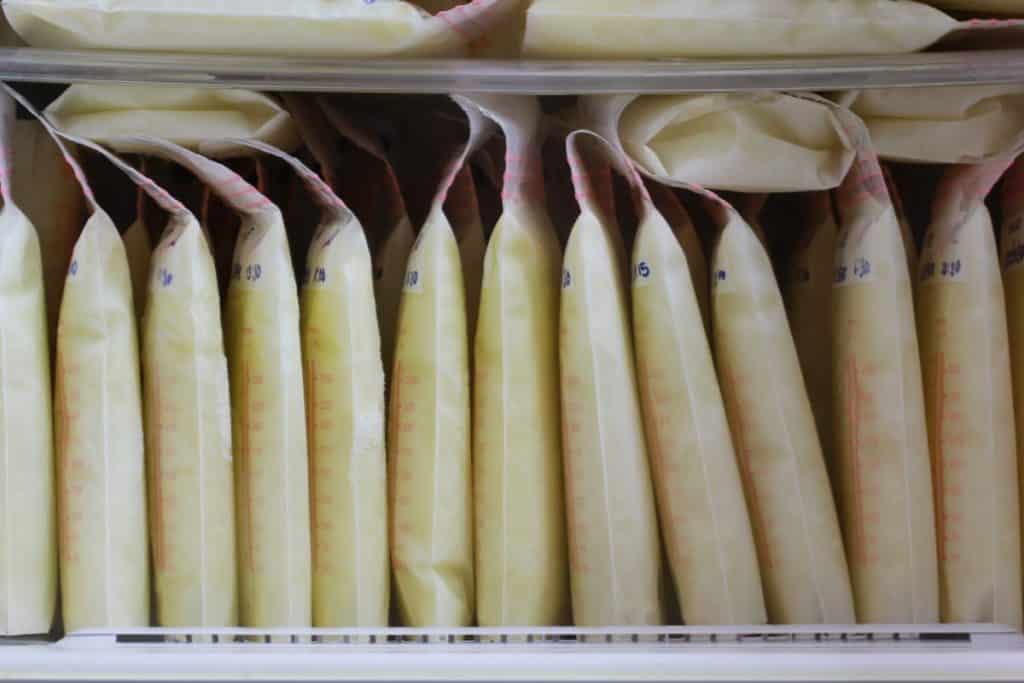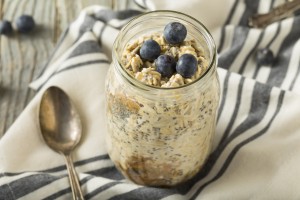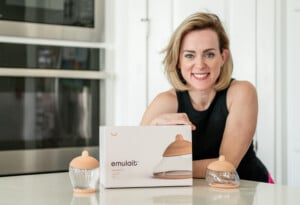Most moms know there’s a connection between breast milk and its benefits and a baby’s cognitive development, growth, weight gain, and immune system resilience. Breast milk contains antibodies to fight infection and has built-in probiotics and more, making it nature’s perfect food for a baby.1
You can even use breast milk to treat some minor issues your baby may have, whether a cradle cap, a clogged tear duct, eczema, or even preventing ear infections. So not only does breast milk provide optimal nutrition and is one of the most biologically appropriate “foods” for your baby, but some moms and experts swear by breast milk’s homeopathic treatments, too.
So, what are the benefits of breastfeeding, and how is breast milk nature’s perfect food?
Benefits of Breastfeeding
This form of “liquid gold” produced by a mother for her child provides the perfect balance of macronutrients (carbs, protein, fats) along with micronutrients (vitamins and minerals). It’s the ideal substance to support optimal development and growth. However, recent research indicates breast milk is far more critical to a child’s immune system than initially thought.2
The sugar and protein found in breast milk are better absorbed by your baby than formula, and it has positive effects on a baby’s brain growth and nervous system development.10 It can also prevent mild to severe infections, including infections of the digestive system, lungs, and ears.10 When a breastfed baby does get an infection, it’s likely not to be as severe.10 If all that wasn’t enough, studies have shown breastfeeding for at least 2 months can lower the risk of SIDS by nearly half.11
Reduces the Likelihood of Developing Cancer
Research has shown that when mothers breastfeed children for more than six months, the children are less likely to develop childhood leukemia and lymphoma, possibly because these types of cancer are affected by disruptions to the immune system.1
Breast milk also has benefits for moms, like recovering from childbirth more quickly and easily, a reduced chance of breast cancer and ovarian cancer, and a reduced risk of developing type 2 diabetes, rheumatoid arthritis, and cardiovascular disease, including high blood pressure and high cholesterol.3 A study compared breast milk and lanolin to treat sore nipples. They found that when subjects rubbed breast milk on their nipples after a feeding session, it provided better healing than lanolin without any side effects.9
If these weren’t enough reasons to find breast milk a miracle liquid, you can also use this nutrient-packed super food for homeopathic remedies. Some “cures” are according to science, and some are more anecdotal that moms swear have worked for them.
Potential Breast Milk Cures
Studies show that breast milk is effective in the treatment of many skin and soft tissue conditions, such as:7
- Diaper rash
- Eczema
- Acne
- Umbilical cord separation
- Sore, dry, or cracked nipples
- Pink eye
- Nasal congestion
- Minor scrapes
- Burns and other superficial skin wounds
While I had to exclusively pump for 18 months for my child to get breast milk (0/10, would not recommend), I was always super thankful for the stash I had saved in the freezer just in case. I didn’t use this solely for feeding him. I saved it if he ever had anything like cradle cap, eczema, a clogged tear duct, or other issues. Storing pumped breast milk is helpful so you can use it for some of these ailments.
Breast Milk Storage
A chart from The Centers for Disease Control and Prevention shows long breast milk can be stored:6
Storing Breast Milk on the Counter
- Store freshly pumped milk on your countertop for up to four hours.
- Thawed and frozen milk can be stored on the counter for one to two hours.
- You must use milk leftover from feeding within two hours after the baby finishes the bottle.
Storage of Breast Milk in the Refrigerator
- Store freshly pumped milk in the fridge for up to four days.
- Store thawed or frozen milk in a refrigerator for up to 24 hours.
- You can store milk leftover from feeding in the refrigerator for up to two hours.
Storing Milk in a Freezer
- Freshly pumped milk is best if used within six months after being stored in a freezer. Up to 12 months is acceptable.
- Never refreeze thawed or previously frozen milk.
- Use milk leftover from feeding within two hours after the baby finishes.
Read also: How To Collect, Store, and Prepare Breast Milk
Colors of Breast Milk
Breast milk has no “normal” color because it can vary from mom to mom. But it is typically white, yellow, clear, or has a bluish hue.4
Yellow
Breast milk is typically yellow right after giving birth because it’s the color of colostrum, which is rich in antibodies and thicker.5 Freezing milk and eating a lot of carrots or sweet potatoes can also turn it yellow.4
Blue
If your breast milk is blue or a bluish-white color, this is your transitional milk.5 This milk replaces the colostrum anywhere from a couple of days to two weeks after delivery.
Green
Again, this has to do with diet. Have you been eating a lot of fresh leafy greens or perhaps colored sports drinks or seaweed? It could turn your milk green.4
Pink or Red
If you’ve been eating a lot of red foods, this could turn your milk red. However, it could also be blood in your breast milk and may happen with cracked nipples.4 However, contact your doctor if you continue to see red or pink milk for an extended period.
How to Tell If Breast Milk Goes Bad
If your milk has a metallic, fishy, or rancid odor, has a soapy smell or taste, and if your baby refuses to drink it, it may have gone bad.8 This could be due to improper storage, issues with your pump parts (like they aren’t clean), or the supplements you’re taking.
This liquid gold can potentially treat many ailments, from cradle cap to eczema. It also prevents many respiratory diseases, ear infections, stomach issues, diabetes, asthma, and hypertension. But always check with your health care provider before trying any of the above remedies, as every child and circumstance is different.































